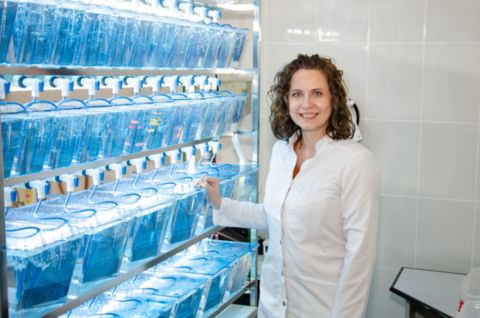The World Pharmacists Day is celebrated every year on September 25th. This holiday, established by the International Pharmaceutical Federation in 2009, is celebrated by pharmacists, pharmaceutical sales representatives, medicine scientists and other professionals standing guard over the health of people. Shortly before this holiday, we talked to Senior Research Fellow of the SUSU Research Laboratory for System Pathology and Advanced Medicinal Products Mariia Komelkova.
– Together with your team, you are working in the Research Laboratory for System Pathology and Advanced Medicinal Products. What role does your work play in the development of the pharmaceutical industry in Russia?
– Our experiments and research studies play an important role in the development of the Russian pharmaceutics. After all, we are searching for, creating and studying new compounds, adapted to the current medical challenges. We are striving to achieve high results since we are expecting that these would facilitate the creation of innovative medications that would improve the effectiveness and safety of treatment of various diseases. This would reduce the dependence of our country on imported medications and would ensure better self-sufficiency of this industry.
– Could you please tell us about the “inhabitants” of your laboratory: who helps you in the studying of medications?
– An important part in our laboratory’s work are Zebrafish. They are small, easy to handle and reproduce quickly. And they are widely used for biomedical research. Thanks to this model, we can assess the toxicity and effectiveness of new compounds, what speeds up the process of developing medications based on them.
– What kind of medications do you study today? Do you synthesize new promising compounds?
– Currently, we are studying compounds that could help combat depression and inflammations. These are totally new molecules, which are being synthesized by our colleagues, chemists.
– How has the choice of laboratory animals been changing over time? How much did the methods of medications research differ, say in the 18th century? Did they test medications at all?
– The choice of laboratory animals has evolved significantly: from using mostly big animals (like dogs and pigs) to using smaller ones (rats, mice, and even Danio Rerio fish with genetically similar parameters, what makes simulation of human diseases easier). In the 18th century, the methods were quite primitive and testing of medications was often based on observations and experience, without strict ethical and scientific standards, which exist today.
– Which directions of research for the Russian pharmaceutics do you think are the most promising ones for the coming decade?
– I believe that the most promising and important is the use of such approach as repositioning of the well-known medications, that is studying new methods of application of old clinically approved medications. Such method allows to put medications to the pharmacological market within a short time frame. Another promising direction is the development of target medications with selective action. We are striving to work in the context of relevant problems of the pharmaceutical industry, and I feel confident that we will have things to offer in the future.




